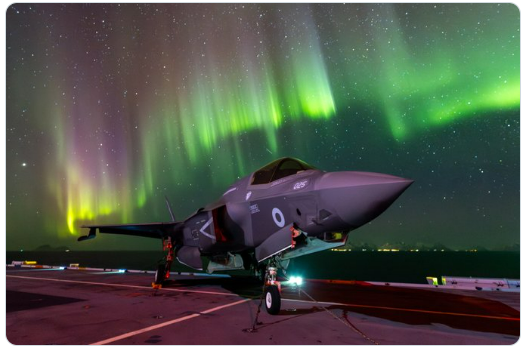Susan Sontag famously argued that photography was violent in nature. Photographs, according to Sontag, are violent as they fracture linear time. Each photograph is like an atom torn from linear time and forever frozen. The more photographs one takes, the more he or she rips linear time into fragments that can longer form a coherent whole. Moreover, photography is violent as the photographer makes the world subservient to his or her worldview. Photographs do not depict the world, but the photographer’s view of the world. Most importantly, photography is violent as all photographs have an aesthetic dimension, even those photographs that capture scenes of violence and destruction. In this way, photography beauties wars, weapons of war and the victims of wars. For Sontag, photography’s violent nature is manifest in the language used by photographers who “load” their cameras, “aim” at their objects and take “a shot”.
In recent years visuals have become central to the practice of digital diplomacy. Given that social media are visual mediums, and given that visuals can summon the attention of social media users, diplomats and foreign ministries (MFA) now incorporate images in most of their posts and tweets. In fact, diplomats have become visual narrators as they use images to convey elaborate and complex foreign policy messages. Moreover, diplomats have learned to speak through visuals as never before have so many diplomats created and published so many visuals daily.
The rhetoric of the diplomatic image may vary, and while some visuals serve an evidentiary purpose in that they “prove” that certain events did in fact take place. Other visuals are used to elicit an emotional response and influence the worldviews of digital publics. As the cliché goes, an image is worth 1000 words and one image of a bombed and dissolute Aleppo is more powerful than 1000 harshly worded tweets.
The past two years have seen the emergence of a new visual trend among diplomats and diplomatic institutions- visuals of war and weapons of war. What is unique about these visuals is their beautification of wars and weapons of war. Indeed, diplomats, MFAs and International Organizations increasingly publish images in which the subject is an instrument of war and destruction. Consider for instance the two visuals below posted by NATO and the British Ministry of Defense.
In both images the subject is a weapon of war. And in both images the weapon is beautified. In the first image the Northern Lights, or Aurora Borealis, seems like a coat of majestic armor surrounding a luminescent fighter jet. In the second image, the green colors of the Northern Lights are juxtaposed with the vibrant colors of the tricolor or France’s national flag. What is most important about the two images is that they both de-contextualize the subject. The British fighter jet and the French ship are not depicted in battle or during a military exercise. Both images capture the weapons of war in nature, amidst a stunning natural phenomenon. The jet and the ship are thus re-contextualized as part of nature and as natural objects or objects that are natural to our world. In this instance, the beautification of weapons of war casts them as natural rather than options of last resort or as part of humanity’s innate tendency towards violence and destruction.
Ukraine has also taken to publishing visuals that beautify war itself. Some of the visuals, shown below, capture Ukrainian forces preparing for battle set against natural beauty such as snow. These visuals depict war itself as something natural and beautiful. Other visuals focus on warriors or soldiers such as that of a lone soldier walking down a snowy patch of land. Shot against a wintry landscape, the composition of the image and the snow tracks create a sense that the soldier is walking towards something, towards some manifest destiny. Yet, once again, nature and war are joined, and war becomes the continuation of nature by other means.
In another visual, shown below, Ukrainian forces are shot while wearing camouflage. Here, war and nature are not just joined together but they finally merge to create a single object. Much like a photographer, the Ukrainian soldier aims his or her weapon to take a shot. The soldiers’ eyes are the only body part that is exposed. And yet this image, which could have been taken mid-battle, is not menacing or alarming. It is simply beautiful, as beautiful as the soldiers’ eyes.
As noted earlier, many MFAs and International Organizations publish such images which beautify war and weapons of war. This is an alarming trend given that today’s world is one that is prone to conflict and war. Such images are violent as they rip soldiers and weapons of war from their actual surroundings and transport them to natural settings. In doing so, these images and visuals suggest that war is natural and beautiful and not a costly exercise that leads to immense human pain and suffering.
These images and visuals also negate one of the primary functions of diplomacy- to resolve disputes and crises without resorting to war. As these images populate the social media feeds of users across the world, they promote the view of war as something “good, natural and necessary” to quote scholar Susan Jackosn. These images may diminish opposition to wars and to mass investments in weapons of war leading the world closer to armed conflict while undermining the very function of diplomacy.



 The F-35B lightning on the deck of the HMS Prince of Wales with a stunning display of Aurora Borealis in the background.
The F-35B lightning on the deck of the HMS Prince of Wales with a stunning display of Aurora Borealis in the background. The aircraft carrier is off the coast of Norway taking part in Ex Steadfast Defender, the largest NATO exercise in decades.
The aircraft carrier is off the coast of Norway taking part in Ex Steadfast Defender, the largest NATO exercise in decades.  (@DefenceHQ)
(@DefenceHQ) 

 FREMM Normandie off the coast of Norway
FREMM Normandie off the coast of Norway : 67th Mechanized Brigade
: 67th Mechanized Brigade 









